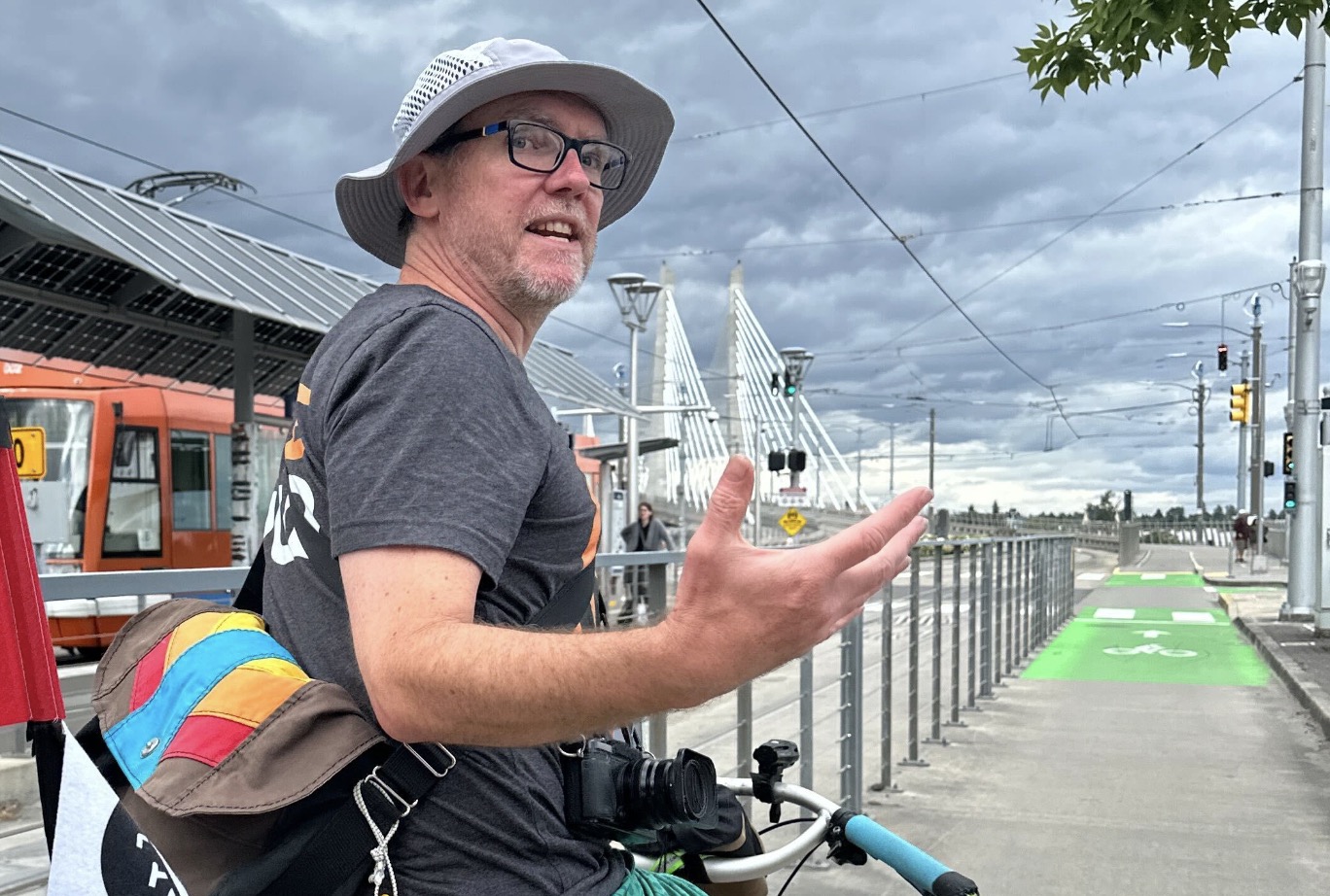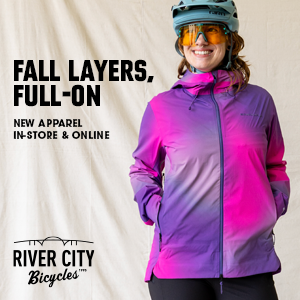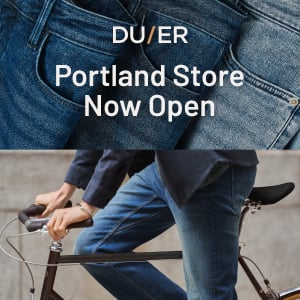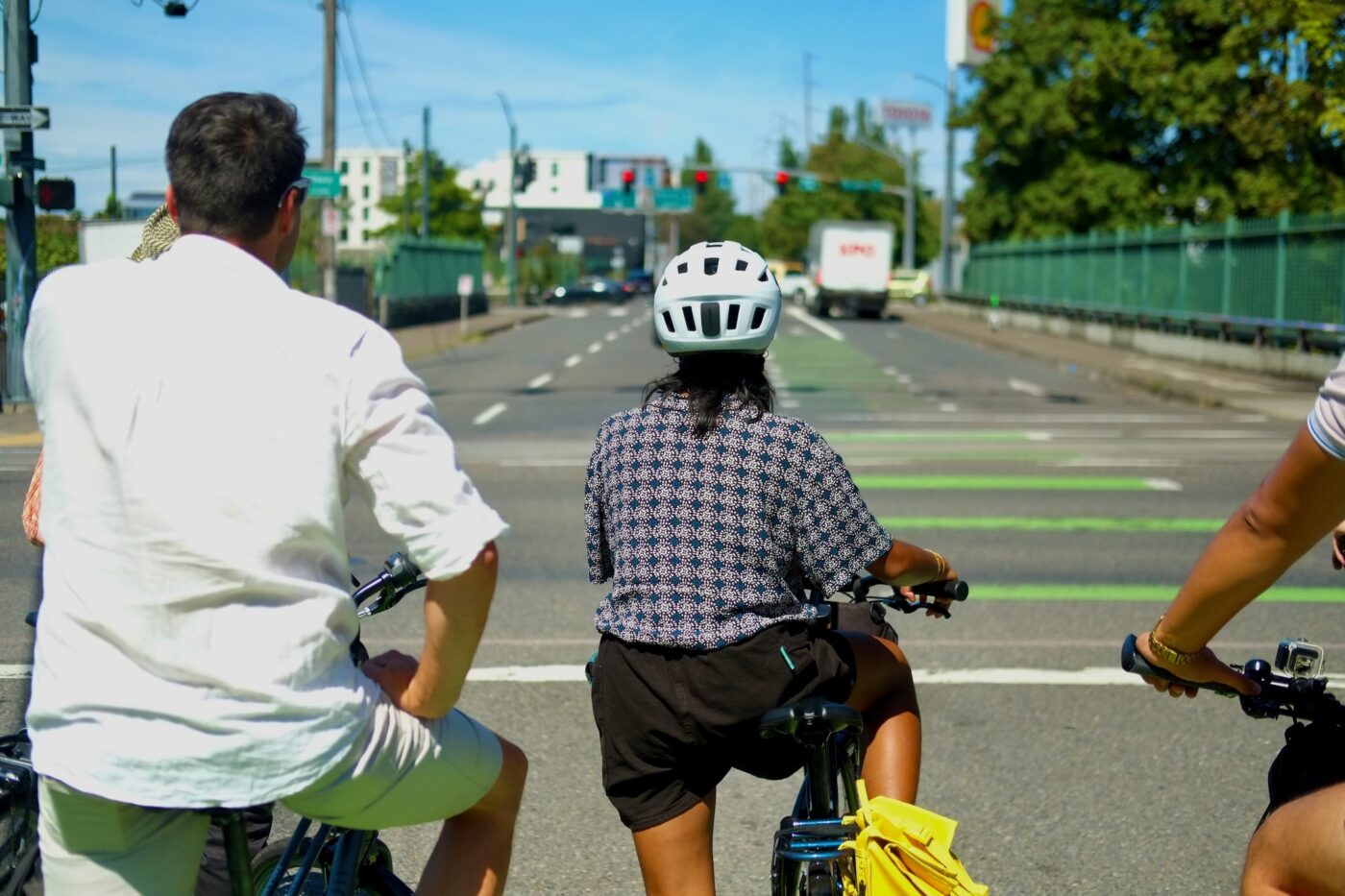
[Publisher’s Note: This is the second part of a three-part series by Portlander Aaron Kuehn (see part one here). Aaron is the outgoing chair of BikeLoud PDX, a local bike advocacy nonprofit. He recently completed the bikeway design workshop offered by the Transportation Research and Education Center based at Portland State University.]
Get out your colored pencils and some sheets of paper. Let’s design our own excellent bikeways! You’ve completed your 30 percent plans and are ready to move on to the next design phase: 60% plans. This stage requires big decisions and I’ll take you through them step-by-step.
Now, where were we…
Step 6 – Design objectives
What is the specific problem we are designing a solution for? What are the objectives for this project? What does success look like? For example, we might be trying to advance the bike mode-share, by completing a network gap, with a bikeway that can be used by all-ages-and-abilities. We might want to avoid conflicts with other travel modes by separating speeds and decreasing exposure to speed differentials.
On a separate sheet of paper, write down your list of design objectives, and refer back to them when you get stuck.
That’s why banning cars from some streets is rarely a proposed solution, it’s just too easy. Planners and engineers in Portland are proud of their creative solutions to complex problems within our unique constraints.
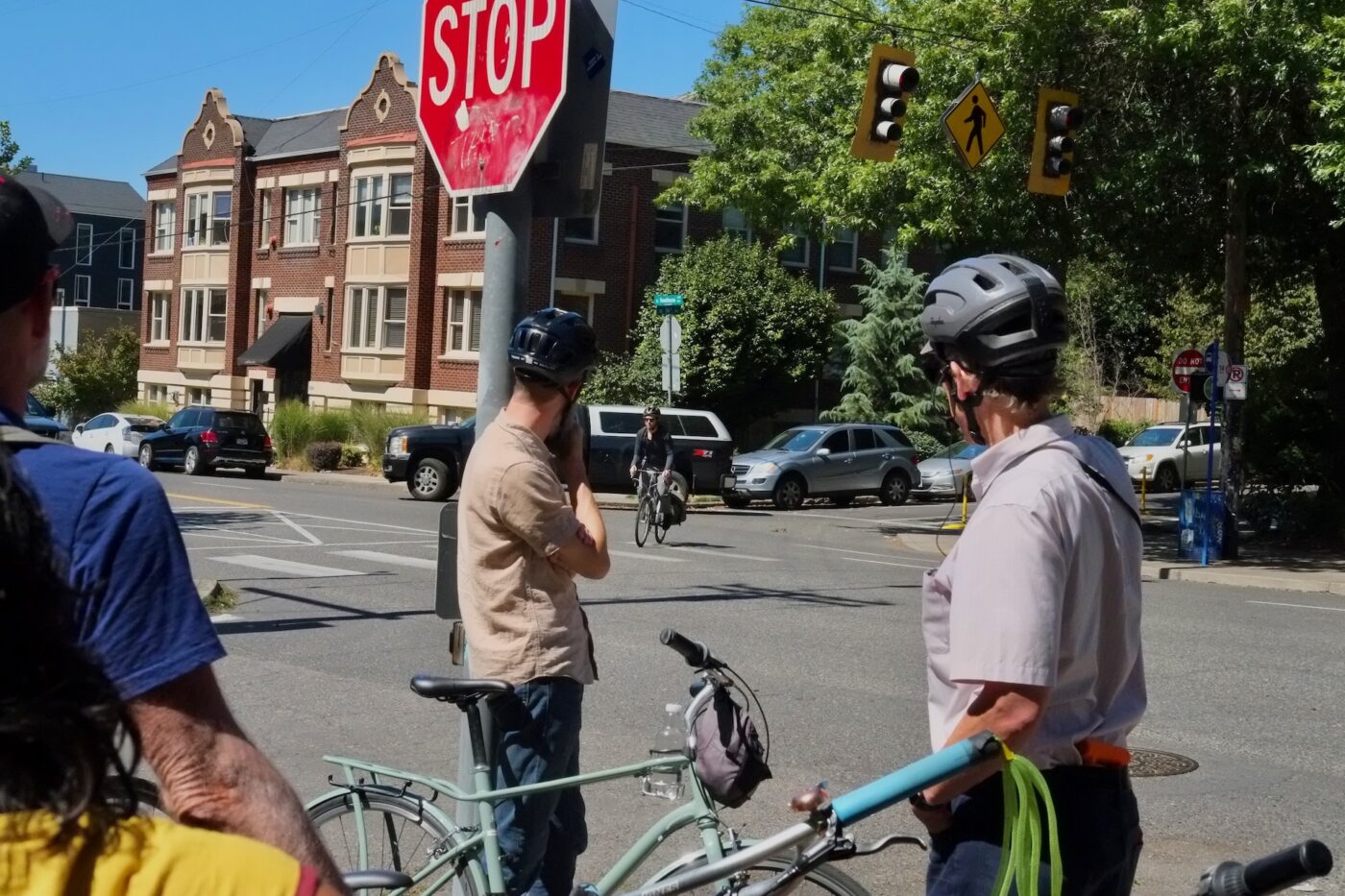
Step 7 – Design constraints
What are the constraints on your bikeway design? Timeline, funding, political-will, roadway width, existing lane allocations, existing traffic patterns, curb uses, adopted plans, policies, and guides can all constrain your design choices. But, the more constraints, the more creativity required to solve the problem and realize the design objectives. Experienced designers love constraints — they make the puzzle a greater challenge. That could be why just banning cars from some streets is rarely a proposed solution, it’s just too easy. Planners and engineers in Portland are proud of their creative solutions to complex problems within our unique constraints.
In the bikeway design workshop, our instructors wanted to show us the bloody heads of their conquered gnarly design problems — five way intersections with complex signal phasing, parking in the middle of the street, intentional deviations from federal standards. They are like plate spinners in a circus, balancing precarious impossibilities to the punchy pulses of the Saber Dance.
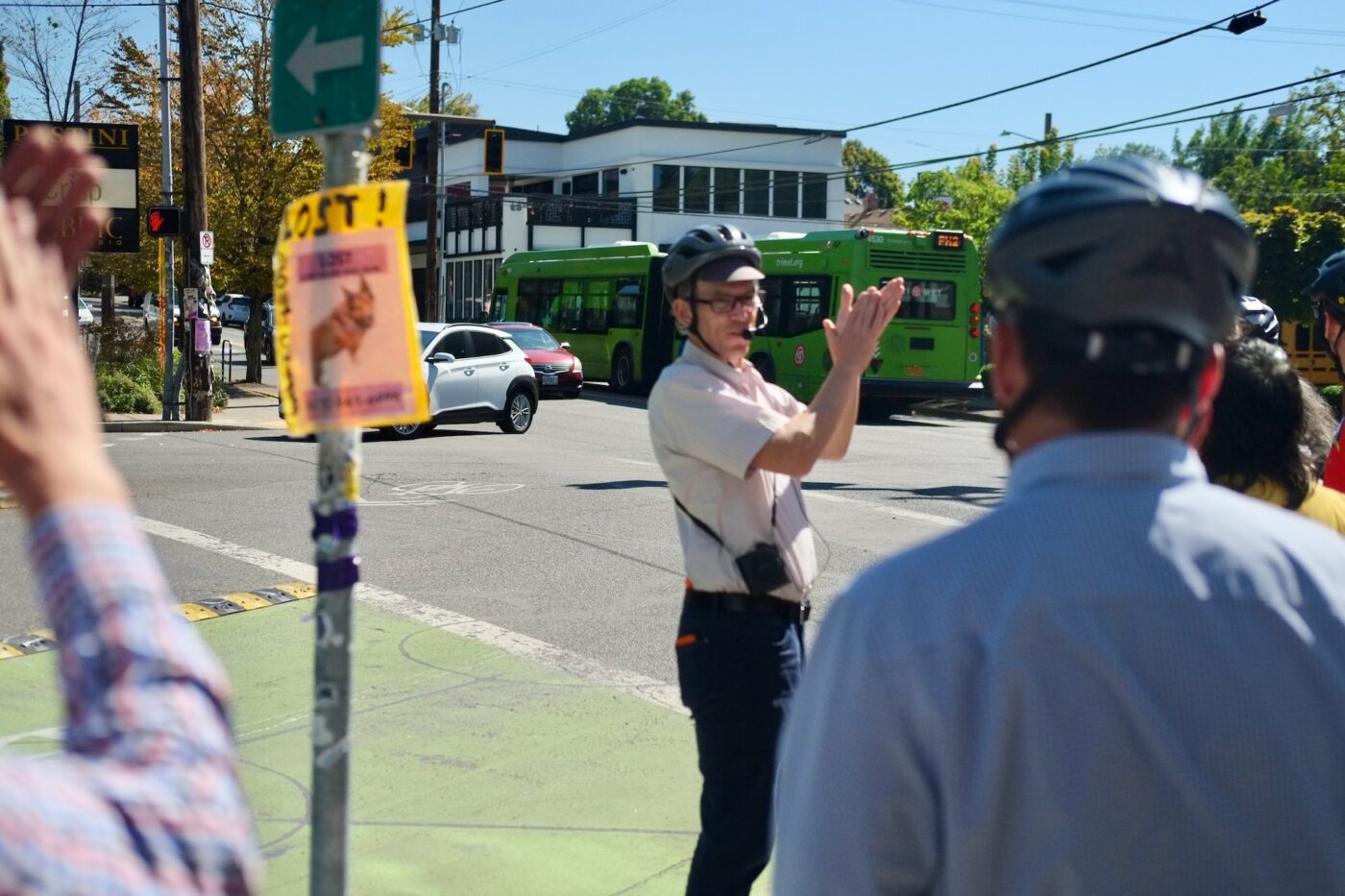
Ingenuity is a desirable quality in a bikeway designer, because despite all the urbanist fracas, bikeways are being shoehorned into a calamitous and dysfunctional motor vehicle network. Prying space and time away from drivers is technically possible now, roads in Oregon only need to maintain acceptable and reliable levels of mobility, but building out facilities for walking and biking is a sleight of hand, in bureaus still stocked with engineers trained on Level of Service.
Make a list of all your design constraints, place it next to your design objectives list, and put on your magic design genius hat.
Step 8 – Research
If you look at your lists from the previous steps, and you find there is no way to meet your objectives inside your constraints, and none of those constraints have flexibility, it might be time for an experiment.
In his excellent book, Killed by a Traffic Engineer: Shattering the Delusion that Science Underlies our Transportation System, Wes Marshall writes, “I should start by making it clear that traffic engineers — as far as I know — are not out there trying to cause deliberate harm to anyone. What traffic engineers are guilty of is creating a transportation system whose designs remain largely based on plausible, but unproven, conjecture.”
Portland is a test bed for experimental bikeways, some that become new national standards, and some cautionary curiosities best forgotten. If your innovative bikeway design needs some hard science backup — our academic research partners are ready. The Transportation Research and Education Center (TREC) at PSU has published 274 reports on walking, biking and transit (with 67 reports specifically on bicycling). Their Initiative for Bicycle and Pedestrian Innovation program hosts the workshop that inspired this how-to article.
Step 9 – What color is your bikeway?
Like painting-by-numbers, engineers often consult the Federal Manual for Uniform Traffic Control Devices (MUTCD) for their designs, because of its commanding Standards that appear to alleviate engineers from responsibility. But the mandatory Standards are also blended with recommended Guidance, Optional practices, and Support statements that still require judgment calls. Even the Standards can be deviated from with good reason.
The MUTCD declares that it “is not a roadway design manual.” It covers devices like signs and markings, and therefore visual language and communication. Many Portland designs are askew from the key tenet of the MUTCD: “Uniformity means treating similar situations in a similar way.”

Using symbols in a consistent way is what enables us to understand the words in this article. The familiar communication structures allow us to read with less effort, so we can focus on the high quality substance. Uniform bikeway design allows people riding to focus on the conversation with their ride buddy, or look for a fun place to eat.
Clear communication is also important because your bikeway design tells a story. It tells us the purpose of the street, what the expectations are for its use, and how that relates to the surrounding place, and the values and priorities of the city.
Portland bike planners have a disdain for the MUTCD and uniformity, preferring unique solutions for unique locations. Partly that’s because, even with the latest update, “the structure of the document continues to prioritize motor vehicle movement over the enormous range of other urban street users.” That’s according to NACTO who publish their own design guides which are oriented toward city streets.
This year’s long-awaited update to the MUTCD finally blesses green painted bike lanes. Did you know Portland first tried blue bike lanes back in 1999, avoiding green because it distinctly meant “go”. Dutch bike lanes are considered the best, and they’re red. So considering all the ramifications of uniform communication, what color will your bikeway be?
Step 10 – Spatial economy
I used to design gigantic events in arenas, convention centers, polo fields, and dry lake beds. When I would first look at the empty floor plan on my screen, it seemed like there were infinite creative layout possibilities. But once I had accommodated space for everyone’s needs — drop-off, press, bathrooms, reception, bars, DJ, stage, dance floor, control booth, seating areas, catering, aisles, fire lanes, VIP, power, lighting, HVAC, security, there was no room left for creativity.
Transportation design is like that. Streets might look wide, especially in sprawl zones, but it comes down to inches in the end. Reforming our system from one designed exclusively for cars, to one that meets the needs of all people is about reclaiming space — lane by lane, inch by inch.
Reforming our system from one designed exclusively for cars, to one that meets the needs of all people is about reclaiming space — lane by lane, inch by inch.
Technical tip: Reducing car driving lanes to 10 ft wide has no measured impact on capacity, does not cause more crashes, reduces speeding, reduces crossing distances, and frees up space for protected bike lanes.
Now that we’ve done some deep thinking, and made the big decisions, our 60% plans are becoming real. Going forward, it will be too late to make major changes without risking delays to our bikeway design. Next we’ll start on finishing touches, coloring in any blank areas in our design using Dutch principles, and look at three ways to cross an intersection.
— This series is by Aaron Kuehn, a veteran bike advocate, Bike Happy Hour regular and former chair of BikeLoud who rides a Marin Pine Mountain with hi-viz streamers. Read the full series here.

